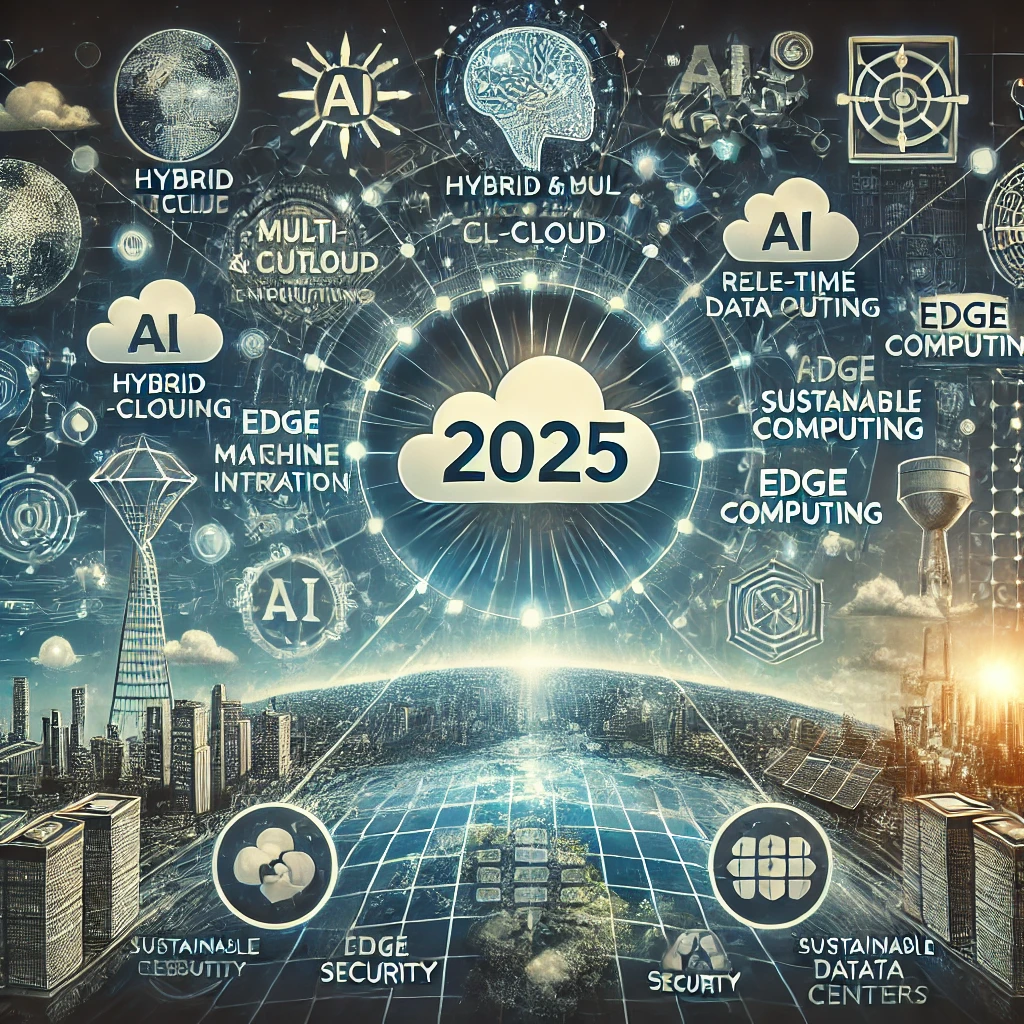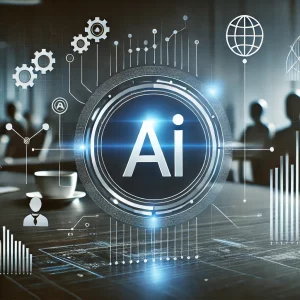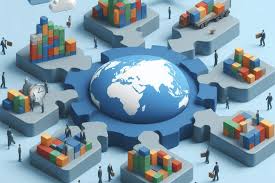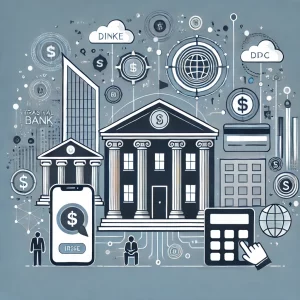Cloud Computing Trends and Predictions for 2025

Cloud computing has revolutionized the way businesses and individuals store, manage, and access data. Over the past decade, it has shifted from a cutting-edge innovation to a core technology that underpins many aspects of modern life, including business operations, entertainment, healthcare, and education. As we look toward 2025, cloud computing is expected to evolve even further, with new trends and advancements shaping the future of technology.
In this article, we will explore the key trends in cloud computing and offer predictions on how the industry will develop by 2025. These trends include the rise of hybrid and multi-cloud environments, the increasing role of artificial intelligence (AI) in cloud services, enhanced security measures, serverless computing, and edge computing.
Key Cloud Computing Trends and Predictions for 2025
1. The Rise of Hybrid and Multi-Cloud Strategies
By 2025, hybrid and multi-cloud strategies will become the standard for most enterprises. A hybrid cloud environment combines both public and private cloud infrastructures, allowing businesses to enjoy the flexibility and scalability of public clouds while retaining control over sensitive data with private clouds. Multi-cloud refers to the use of multiple cloud providers to meet different needs, which reduces the risk of vendor lock-in and allows organizations to choose the best solutions for their workloads.
This approach is driven by the need for greater flexibility, cost optimization, and disaster recovery capabilities. Businesses will continue to seek a balance between the scalability of public clouds, such as Amazon Web Services (AWS), Microsoft Azure, and Google Cloud, and the security of private clouds for storing sensitive information. According to a report by Flexera, over 90% of enterprises are already adopting multi-cloud strategies, and this trend will only increase by 2025.
Hybrid and multi-cloud solutions will become more seamless, with cloud providers focusing on improving interoperability between platforms. This will enable businesses to move workloads and data between different cloud environments more easily, ensuring that they can optimize costs and performance.
2. Increased Use of AI and Machine Learning in Cloud Services
Artificial intelligence (AI) and machine learning (ML) are playing an increasingly important role in cloud computing. Cloud providers are integrating AI and ML tools into their services to help businesses automate processes, analyze large datasets, and improve decision-making.
By 2025, AI-driven cloud services will become even more prevalent, enabling businesses to achieve greater efficiency and innovation. AI will enhance cloud computing in several key ways:
- Automation: AI will help automate cloud management, including resource allocation, load balancing, and infrastructure monitoring. This will allow organizations to optimize their cloud usage without the need for extensive manual intervention, reducing operational costs and increasing efficiency.
- Data Analytics: AI-powered analytics tools will enable organizations to derive actionable insights from vast amounts of data stored in the cloud. Predictive analytics, natural language processing (NLP), and real-time data analysis will empower businesses to make data-driven decisions.
- AI as a Service (AIaaS): AIaaS will become more accessible and user-friendly, allowing businesses of all sizes to incorporate AI and ML capabilities into their applications without needing in-house expertise. Cloud providers will offer pre-built AI models and APIs that can be easily integrated into existing systems.
The integration of AI and ML into cloud platforms will enable more intelligent and adaptive cloud services, driving innovation across industries such as healthcare, finance, and retail.
3. Enhanced Cloud Security and Compliance
As cloud adoption continues to grow, so does the need for robust security measures. By 2025, cloud security will be one of the most critical concerns for businesses, especially as cyberattacks become more sophisticated and frequent.
To address these concerns, cloud providers will invest heavily in developing advanced security solutions, including:
- Zero Trust Architecture: Zero trust is a security model that requires strict verification for every user and device attempting to access resources, regardless of whether they are inside or outside the network. By 2025, more organizations will adopt zero trust principles to secure their cloud environments.
- AI-Driven Threat Detection: AI and machine learning will play a vital role in identifying and mitigating security threats in real time. AI-driven tools will continuously monitor cloud environments for suspicious activity, helping to prevent data breaches and cyberattacks before they occur.
- Compliance Automation: With increasingly complex regulations around data privacy and protection (such as GDPR and CCPA), cloud providers will offer automated compliance solutions to help businesses meet their regulatory requirements. These tools will streamline audits and ensure that organizations are always in compliance with the latest legal standards.
As cloud security becomes more advanced, businesses will be able to move more critical workloads to the cloud with confidence, knowing that their data is protected by cutting-edge technologies.
4. The Growth of Serverless Computing
Serverless computing is a cloud computing model that allows developers to build and run applications without managing the underlying infrastructure. Instead, the cloud provider automatically allocates resources as needed, enabling developers to focus on writing code rather than provisioning servers.
By 2025, serverless computing will become even more popular, as it offers several advantages over traditional cloud models:
- Cost Efficiency: With serverless computing, businesses only pay for the resources they use, rather than pre-paying for server capacity. This makes it a cost-effective option for applications with variable or unpredictable workloads.
- Scalability: Serverless architectures are inherently scalable, as the cloud provider automatically adjusts the amount of computing power based on demand. This ensures that applications can handle sudden spikes in traffic without the need for manual intervention.
- Faster Development: Serverless computing reduces the complexity of managing infrastructure, allowing developers to build and deploy applications more quickly. This agility will be crucial for businesses looking to innovate and stay competitive in an increasingly fast-paced digital landscape.
As more businesses adopt serverless computing, cloud providers will continue to improve their serverless platforms, offering more tools and services to support a wide range of applications.
5. The Rise of Edge Computing
Edge computing refers to processing data closer to the source of data generation (such as IoT devices) rather than relying on centralized cloud data centers. This reduces latency, improves performance, and enables real-time data processing. Edge computing is particularly important for applications that require low-latency responses, such as autonomous vehicles, smart cities, and industrial IoT.
By 2025, the rise of edge computing will complement cloud computing, creating a more distributed cloud ecosystem. Businesses will increasingly adopt edge computing for use cases where real-time processing is critical, while still relying on central cloud platforms for storage, analytics, and long-term data management.
Key developments in edge computing by 2025 will include:
- 5G Integration: The rollout of 5G networks will enhance edge computing by providing faster, more reliable connectivity. This will enable edge devices to communicate with the cloud and each other in real-time, making applications like smart transportation and remote healthcare more viable.
- Edge AI: AI-powered devices at the edge will enable real-time decision-making without the need to send data back to the cloud. For example, AI algorithms running on edge devices can analyze sensor data in manufacturing plants to detect anomalies and prevent equipment failures.
Edge computing will play a crucial role in industries that require real-time processing, high availability, and low-latency performance, complementing traditional cloud models.
6. Sustainability and Green Cloud Computing
As the world becomes more conscious of environmental impact, businesses are increasingly looking for ways to reduce their carbon footprint. Cloud computing providers are responding to this demand by investing in green initiatives to make their data centers more energy-efficient and sustainable.
By 2025, we will see an increased focus on sustainability in cloud computing, including:
- Energy-Efficient Data Centers: Cloud providers will continue to develop energy-efficient data centers that use renewable energy sources such as wind and solar power. These facilities will be designed to reduce energy consumption and minimize environmental impact.
- Carbon-Neutral Cloud Services: Some cloud providers are already committing to carbon-neutral operations, and by 2025, this will become more common. Businesses will be able to choose cloud providers based on their sustainability initiatives, aligning their IT infrastructure with their environmental goals.
Sustainability will become a competitive differentiator in the cloud industry, with organizations seeking out cloud providers that prioritize green computing practices.
Conclusion
The future of cloud computing is bright, with new trends and innovations driving the industry forward. By 2025, we can expect hybrid and multi-cloud strategies to become the norm, AI and machine learning to be fully integrated into cloud services, and enhanced security measures to protect sensitive data. Additionally, the rise of serverless and edge computing will enable more flexible, scalable, and real-time applications, while sustainability will take center stage as businesses and cloud providers work toward greener IT practices.
As cloud computing continues to evolve, businesses must stay agile and adapt to these changes to remain competitive in the digital economy. The cloud is no longer just a technology—it is a key enabler of innovation, efficiency, and sustainability in the modern world.





